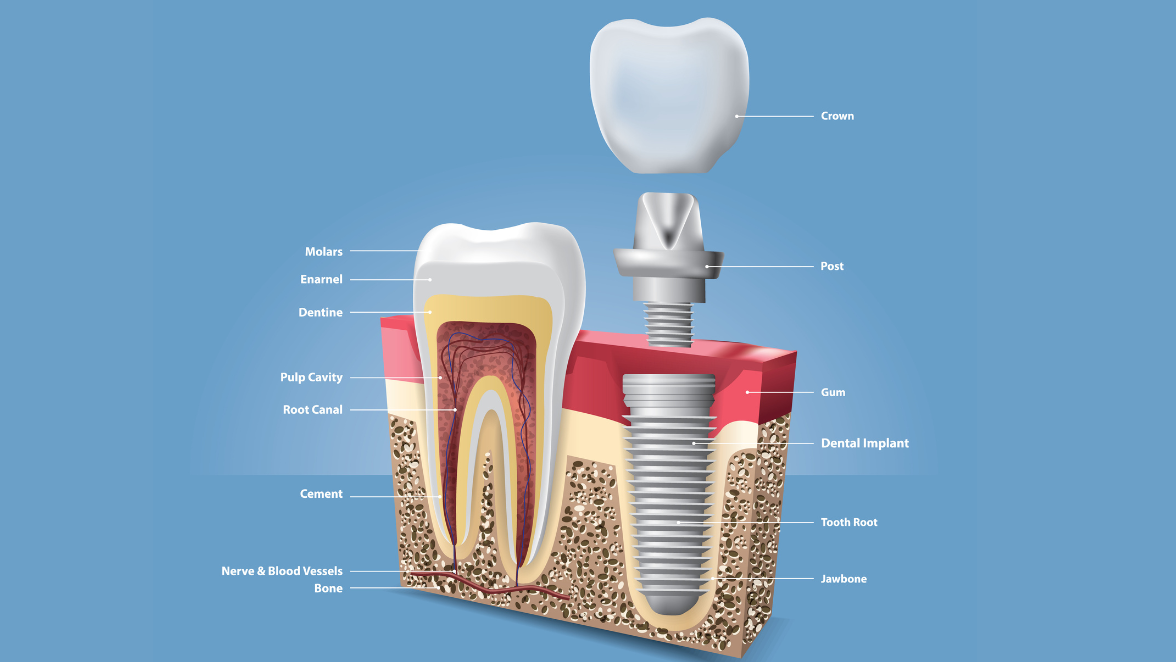Criteria for getting endosteal dental implants
What are Endosteal Implants?
When a dental implant is placed in the jawbone as an artificial root, it is called an endosteal implant. It helps to hold a replacement tooth. Such implants are used when there is tooth loss. In this process, the dental implants are put above the jawbone or inside the gum to hold onto the artificial tooth. Endosteal dental implants are the most common type of implant, which is considered safe by the American Dental Association (ADA). According to American Dental Association, the dental implants are drilled into one’s jawbone, and next, a post is connected to the endosteal implants just after the gum tissue is recovered. After this process, an artificial tooth or a crown is fixed to the post, sometimes using a bridge or dentures. For the process to be successful, the jaw has to have enough bone area to support the dental implants in length, height and width. Endosteal implants can be performed in the form of either blade or root. Various dentists suggest the cylinder form, which is made of a screw, a small cylinder, and an abutment.
Criteria for getting Endosteal Implants:
After a thorough diagnosis of your gum, bones and teeth, the dentist decides if you are liable for the endosteal implants based on the following criteria:
- 1. Good General Health
- 2. Good oral health
- 3. A fully-grown Jawbone
- 4. Enough bone in your jaw
- 5. Healthy gum tissue
- 6. Unwillingness to wear dentures
- 7. Avoiding tobacco products
- 8. And lastly, you must be willing to commit a few weeks or months as it needs time to heal.
Are you Viable? Do you meet the above criteria? If the oral surgeon feels that Endosteal dental implants are not the right choice for you, he may recommend the following alternatives:
Ridge Expansion: where the bone graft material is added to a small ridge along the top of the jaw.
Bone Augmentation: one that involves augmenting your bone in the jaw using bone additives. Subperiosteal Dental Implants: implants are placed on or above the jawbone. Sinus Augmentation: the bone is added below the sinus, also known as a sinus elevation or lift.
Process of Endosteal Implants:
In the first step, your dentist will diagnose if you are a viable candidate for Endosteal implants, the diagnosis and recommended treatment must be confirmed by the dental surgeon. This is followed by the consultation to plan for dental implant placement; this is generally conducted to discuss the series of meetings, required time, surgery cost, and post-implant care. After the confirmation, a date is set for the procedure. To begin the procedure, the dentist numbs the area that requires an implant. The then dentist cuts the gum to expose your jawbone. After that, holes are drilled in the bone and implant the endosteal post is deep into the bone. Therefore the gum will be closed over the post. The operation may be followed by discomfort, bleeding, swelling and bruising.
Post-Endosteal Dental Implants Care:
After the surgery, the doctor instructs you on proper aftercare and appropriate oral hygiene. You may take soft foods for about a week. Inflammation is very common during this period, which should be taken care of by regular cleansing. Silica toothpaste works as a wonder to control bacteria during the recovery stage. The dentist may also prescribe some antibiotics for a speedy recovery. As an alternative to dentures and bridges, many patients prefer dental implants. Endosteal dental implants help patients to regain their smiles after they lose their teeth. Dental X-rays give your surgeon a clear idea of your oral health, thus providing clues if a dental implant will succeed. Depending on your gum and bone structure, you need to pick the best choice for you after consulting your dentist. Hiremath Hospital is one of the best dental implant clinics in Bangalore, with the facility of personalized patient care. Expert physicians provide you with exceptional healthcare experience.

